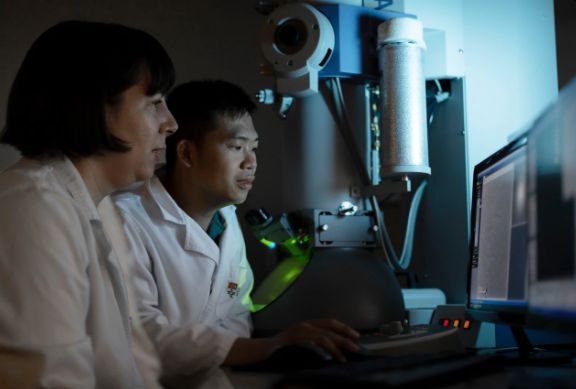
Super interesting research about DNA has lately surfaced. The blue print of life is not only a research material for biology but now, it is also utilized for building tiny robots! Doesn’t it sound futuristic? With a groundbreaking technique called DNA Origami, scientists at The University of Sidney are turning this sci-fi feat into a reality.
What is DNA Origami?
DNA has this natural ability to fold into specific structures, quite similar to origami technique. So, researchers have leveraged this ability of DNA to design and program the strands into tiny, detailed structures. These tiny structures can be customized into various patterns. For instance, the team has created objects like dancing robot and a “nano-dinosaur”.

DNA Strands acting like Meccano Toys
Dr. Shelley Wickham has compared the process as playing with Meccano or a cat’s cradle. Unlike metal or string, which form the basic building block for Meccano, researchers use DNA to construct modular 3D components. They call the 3D piece as voxel.
Each component – voxel in this case – snap together like Velcro. Interestingly, the components stick to their complementary sequence, similar to their fundamental pairing mechanism in the double helix structure of DNA.
- Adenine (A): Pairs with thymine (T)
- Guanine (G): Pairs with cytosine (C)
DNA Origami Revolutionizing Healthcare & Electronics
As expected, the programmable nanostructures can have mind-blowing applications. Some of those are:
- Cancer-Fighting Nanobots: These tiny bots can be employed to deliver medication directly to a tumor, without disturbing the surrounding healthy cells. This will lead to fewer side effects with respect to chemotherapy, which often damages both cancerous & healthy cells
- Responsive Materials: The nano structures can alter their properties, such as, shape, flexibility and conductivity, with change in temperature or pH. In medical field, they can set-up responsive implants and also improve on the existing drug delivery mechanisms. While in electronics, they could revolutionize self-adjusting components that can optimize performance based on the external setting.
- Optical Signal Processing: DNA based robots may enhance performance of devices by optimising the processes and rendering of data. Over all, it will assist in improving speed, efficiency and precision of data handling.
Both, Dr. Wickham and Dr. Minh Tri Luu emphasize the interdisciplinary magic of this project, as it brings together physics, chemistry, and biology. Similar innovations were seen in gene editing tool (remember CRISPR?) and microelectronics. With the current tech and process, DNA origami would surely be the next big leap!
As the team is working towards refining this technology, the idea that tiny bots operating within the human body to diagnose diseases, deliver targeted treatments, or repair damaged tissues is becoming closer to reality.

Takeaway
Be it drug delivery system, designing adaptive materials, or paving the way for new tech, DNA origami is shaping up to be the ultimate tiny toolkit for big innovations.
When it comes to revolutionary tech, I see a parallel between healthcare and molecular robotics. Both are inching us closer to a future where nanobots could be as commonplace as smartphones. Are we ready to embrace such a transformative leap in technology?



